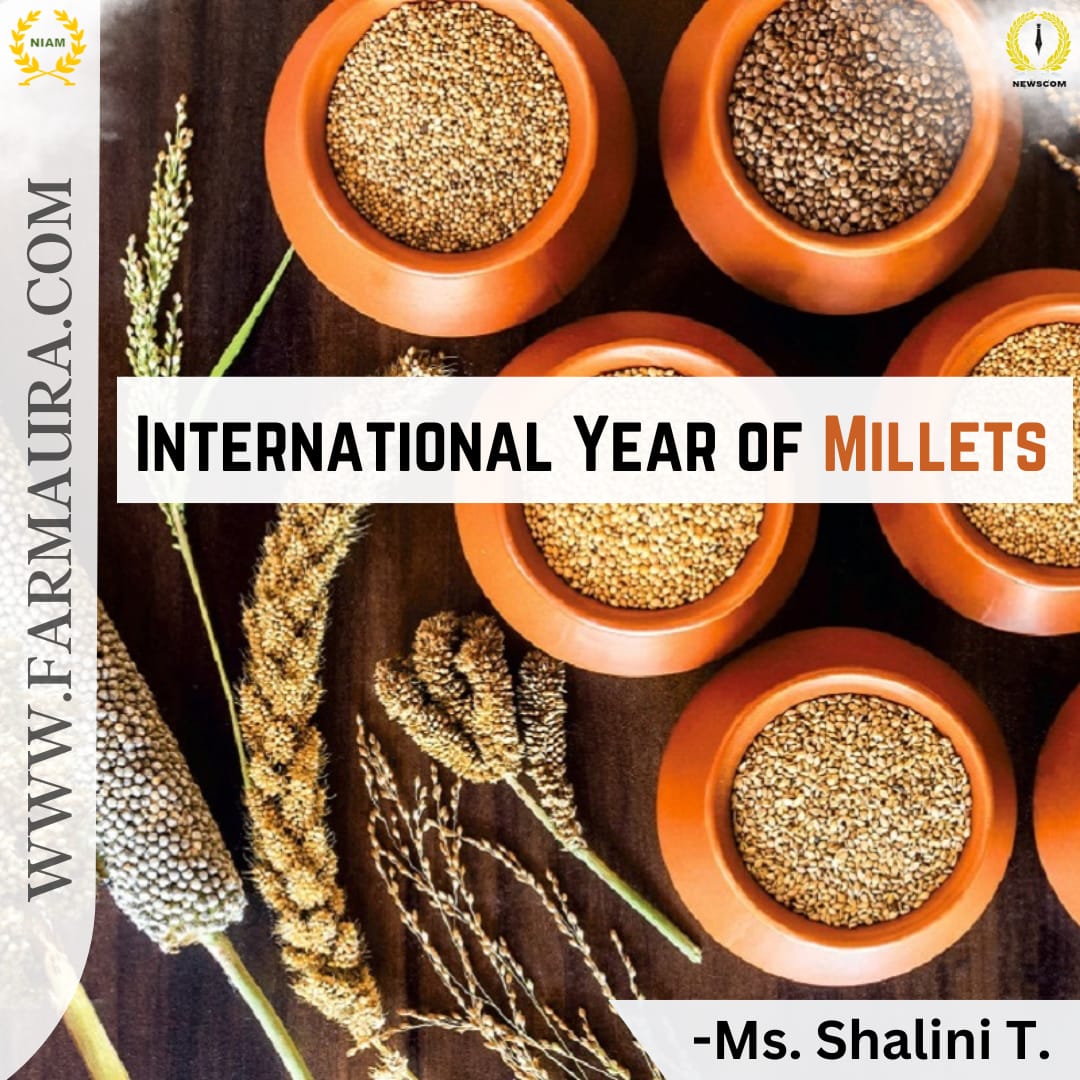The government of India has decided to celebrate the year 2023 as the international year of the Millets, to galvanize support and make it a people’s movement to raise public knowledge about the advantages of millets. More than 70 nations extended their support to India’s resolution in the U.N. General Assembly.

Nutritional benefits
In April 2018, the Agriculture Ministry declared certain varieties of millet as “Nutri Cereals”. Millets play a vital role in improving food security and nutrition status they are considered good sources of proteins and fibers containing around 7–12% proteins, 2-5% fats, 6–75% carbohydrates, and 15-20% dietary fibers.
Millets are abundant in micronutrients each 100 grams of cooked millet contains around 44 milligrams (mg) of magnesium, 100 mg of phosphorous, and 0.272 mg of manganese. They have also been reported to prevent the onset of diabetes and reduce inflammation in the gastrointestinal tract.
Ecological viability of Millets
Before the advent of the green revolution, most traditional crops of Northern states used to be Jowar and Bajra which are being shifted to wheat and rice. But, due to the ill effects of intensive agriculture on ecology and depletion of groundwater, the government plans to shift the crop pattern back onto water-conserving millets.
They are highly drought resistant and do not require much use of pesticides and chemicals viz a viz comparison to wheat and rice. Thus, can play an essential role to create a sustainable future.
Economic advantages
India is the world’s leading producer of millets contributing around 80% of Asia’s millet production, they are usually divided into two sections i.e., major millets (Bajra, Sorghum) and minor millets (Foxtail Millet, Barnyard millet, etc.). The area cover of Jowar is estimated to be around 4.24 million ha with a production of 4.78 million tones. Major producing states are Maharashtra, Karnataka, Rajasthan, and Tamil Nadu. Bajra, Jowar, and ragi together account for about 8-9% of the gross cropped area in the country.
For Bajra the production is prominently led by Rajasthan followed by U.P and Haryana with an overall area cover of 7.75 million ha.
In 2022 the country has witnessed fodder scarcity, and large spikes in fodder inflation are being reported, increasing the price of dairy products as a spillover effect. Thus, the cultivation of millets seems more viable as they are frequently used to feed livestock.
The promotion of millets will promote Indian traditional recipes and value-added products globally. It will coordinate activities to encourage millets cultivation and consumption both domestically and overseas.




